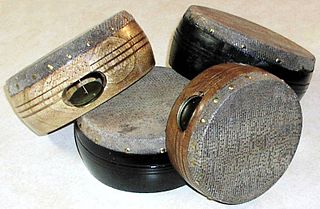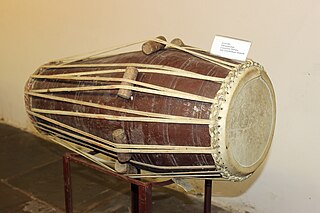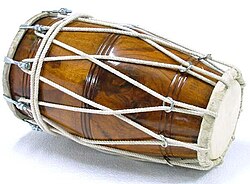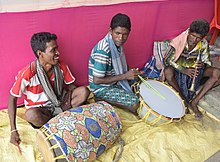
Bhangra is a type of non-traditional music of Punjab originating from the Punjab region of India and Pakistan. Bhangra originates from something called bhoot bhangra which originates from Punjabi Jatts who would dance, and celebrate after the harvest. Over the years, Bhangra has evolved and gained popularity not only in South Asia but also around the world. It has become a significant part of the cultural identity of the Punjabi diaspora in countries like the United Kingdom, Canada, and the United States. It is a type of upbeat popular music associated with Punjab. The style has its origins in the folk music of Punjab as well as western pop music of the 1970s and 1980s. Prior to this musical fusion, Bhangra existed only as a dance form in the native Punjab. This Punjabi music was unique in that it was not traditional nor did it seek any authenticity. While the traditional folk music of Punjab has a set of melodies that are used by various singers, Bhangra was a form of strict "band culture" in that new melodies were composed for each song. Therefore, the musicians were as important as the singers.

The drum is a member of the percussion group of musical instruments. In the Hornbostel-Sachs classification system, it is a membranophone. Drums consist of at least one membrane, called a drumhead or drum skin, that is stretched over a shell and struck, either directly with the player's hands, or with a percussion mallet, to produce sound. There is usually a resonant head on the underside of the drum. Other techniques have been used to cause drums to make sound, such as the thumb roll. Drums are the world's oldest and most ubiquitous musical instruments, and the basic design has remained virtually unchanged for thousands of years.
The music of Trinidad and Tobago is best known for its calypso music, soca music, chutney music, and steelpan. Calypso's internationally noted performances in the 1950s from native artists such as Lord Melody, Lord Kitchener and Mighty Sparrow. The art form was most popularised at that time by Harry Belafonte. Along with folk songs and African- and Indian-based classical forms, cross-cultural interactions have produced other indigenous forms of music including soca, rapso, parang, chutney, and other derivative and fusion styles. There are also local communities which practice and experiment with international classical and pop music, often fusing them with local steelpan instruments.

Dhol can refer to any one of a number of similar types of double-headed drum widely used, with regional variations, throughout the Indian subcontinent. Its range of distribution in Indian subcontinent primarily includes northern areas such as the Jammu, Himachal, Punjab, Haryana, Delhi, Kashmir, Sindh, Assam Valley, Uttarakhand, West Bengal, Odisha, Gujarat, Maharashtra, Konkan, Goa, Karnataka, Rajasthan, Bihar, Jharkhand and Uttar Pradesh. A related instrument is the dholak or dholki. Dhols are amongst other events used in Indian wedding ceremony processions such as Baraat or Varyatra.

The khol is a terracotta two-sided drum used in northern and eastern India for accompaniment with devotional music (bhakti). It is also known as a mridanga, not to be confused with mridangam. It originates from the Indian states of West Bengal, Assam and Manipur. The drum is played with palms and fingers of both hands.
Chutney music is a fusion genre of Indian folk music, specifically Bhojpuri folk music, with Caribbean calypso and soca music, and later with Bollywood music. This genre of music that developed in Trinidad and Tobago is popular in Trinidad and Tobago, Guyana, Suriname, Jamaica, other parts of the Caribbean, Fiji, Mauritius, and South Africa. Chutney music emerged mid-20th century and reached a peak of popularity during the 1980s. Several sub-genres have developed.

The music of Suriname is known for kaseko music, and for having an Indo-Caribbean tradition.
Fiji is an island nation in the Pacific Ocean. Though geographically Melanesian, the music of Fiji is more Polynesian in character. Nevertheless, Fijian folk styles are distinct in their fusion of Polynesian and Melanesian traditions. Folk music is dominated by vocal church music, as well as dances characterized by rich and dull harmony and complex percussion made from slit drums or natural materials, such as drums.
The music of Guyana encompasses a range of musical styles and genres that draw from various influences including: Indian, Latino-Hispanic, European, African, Chinese, and Amerindian music. Popular Guyanese performers include: Terry Gajraj, Eddy Grant, Dave Martins & the Tradewinds, Aubrey Cummings, Colle´ Kharis and Nicky Porter. Eddie Hooper The Guyana Music Festival has proven to be influential on the Guyana music scene.

The davul, dhol, tapan, atabal or tabl is a large double-headed drum that is played with mallets. It has many names depending on the country and region. These drums are commonly used in the music of the Middle East and the Balkans. These drums have both a deep bass sound and a thin treble sound due to their construction and playing style, where different heads and sticks are used to produce different sounds on the same drum.

Music of Jammu and Kashmir reflects a rich musical heritage and cultural legacy of the Indian-administered union territory of Jammu and Kashmir. Two different regions of Jammu and Kashmir consists the Jammu region and Kashmir Valley. Music of Kashmir Valley has influences of Central Asian music while music from Jammu region is similar to that of other regions of North India.

The kanjira, khanjira, khanjiri or ganjira, a South Indian frame drum, is an instrument of the tambourine family. As a folk and bhajan instrument, it has been used in the Indian subcontinent for many centuries.

In Trinidad and Tobago, Jamaica, and other parts of the Caribbean, the term tassa refers to a drumming ensemble drawn from an amalgamation of various North Indian folk drumming traditions, most importantly dhol-tasha, a style that remains popular today in many parts of India and Pakistan. Beginning in the 1830s and lasting until 1918, dhol-tasha was taken around the world by Indian workers, mostly from present-day Bihar and Uttar Pradesh, enmeshed in a global scheme of indentured labor in British, French, and Dutch territories.

The pakhavaj is a barrel-shaped, two-headed drum, originating from the Indian subcontinent, the oldest version of double sided drums and its descendants are mridangam of Southern India and kendang of Maritime Southeast Asia and other South Asian double-headed drums. Its older forms were made with clay.
In Trinidad and Tobago, Guyana, and Suriname, chutney soca music is a crossover style of music incorporating soca and calypso elements and English, Hindustani, and Hinglish lyrics, chutney music, with Western instruments such as the guitar, piano, drum set, and Indian instruments such as the dholak, harmonium, tabla, and dhantal.

The naqareh, naqqāra, nagara or nagada is a Middle Eastern drum with a rounded back and a hide head, usually played in pairs. It is thus a membranophone of the kettle drum variety.
Indo-Caribbean music is the musical traditions of the Indo-Caribbean people of the Caribbean music area. Indo-Caribbean music is most common in Trinidad and Tobago, Guyana, Jamaica, Martinique and Suriname.

A tabla is a pair of hand drums from the Indian subcontinent. Since the 18th century, it has been the principal percussion instrument in Hindustani classical music, where it may be played solo, as an accompaniment with other instruments and vocals, or as a part of larger ensembles. It is frequently played in popular and folk music performances in India, Bangladesh, Afghanistan, Pakistan, Nepal and Sri Lanka. The tabla is an essential instrument in the bhakti devotional traditions of Hinduism and Sikhism, such as during bhajan and kirtan singing. It is one of the main qawwali instruments used by Sufi musicians. The instrument is also featured in dance performances such as Kathak. Tabla is a rhythmic instrument.
The zerbaghali is a goblet-shaped hand drum that is played in the folk music of Afghanistan.

The tabla tarang is a melodic percussion instrument originating from the Indian subcontinent. It consists of between ten and sixteen tuned dayan drums. In a tabla "pair" instrument, the dayan is the treble drum and the bayan is the bass drum. Tarang means "waves". By hitting with the hand at the center of the different dayan drums – known as syahi – notes of different pitches are produced like a bell ringing. The player is able to perform melodies based on several ragas.















